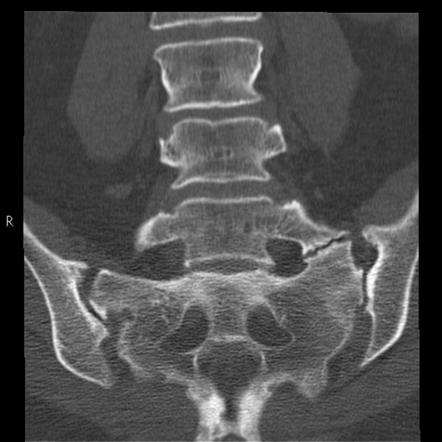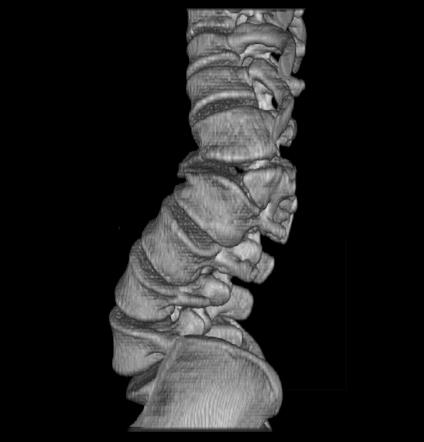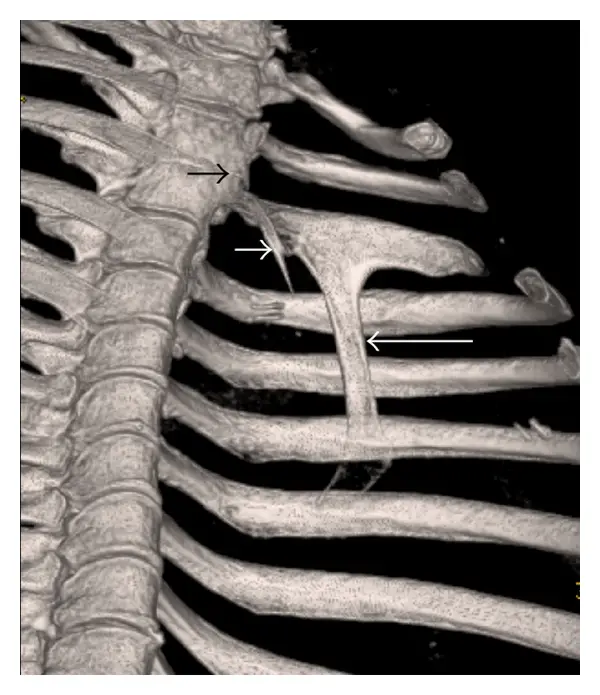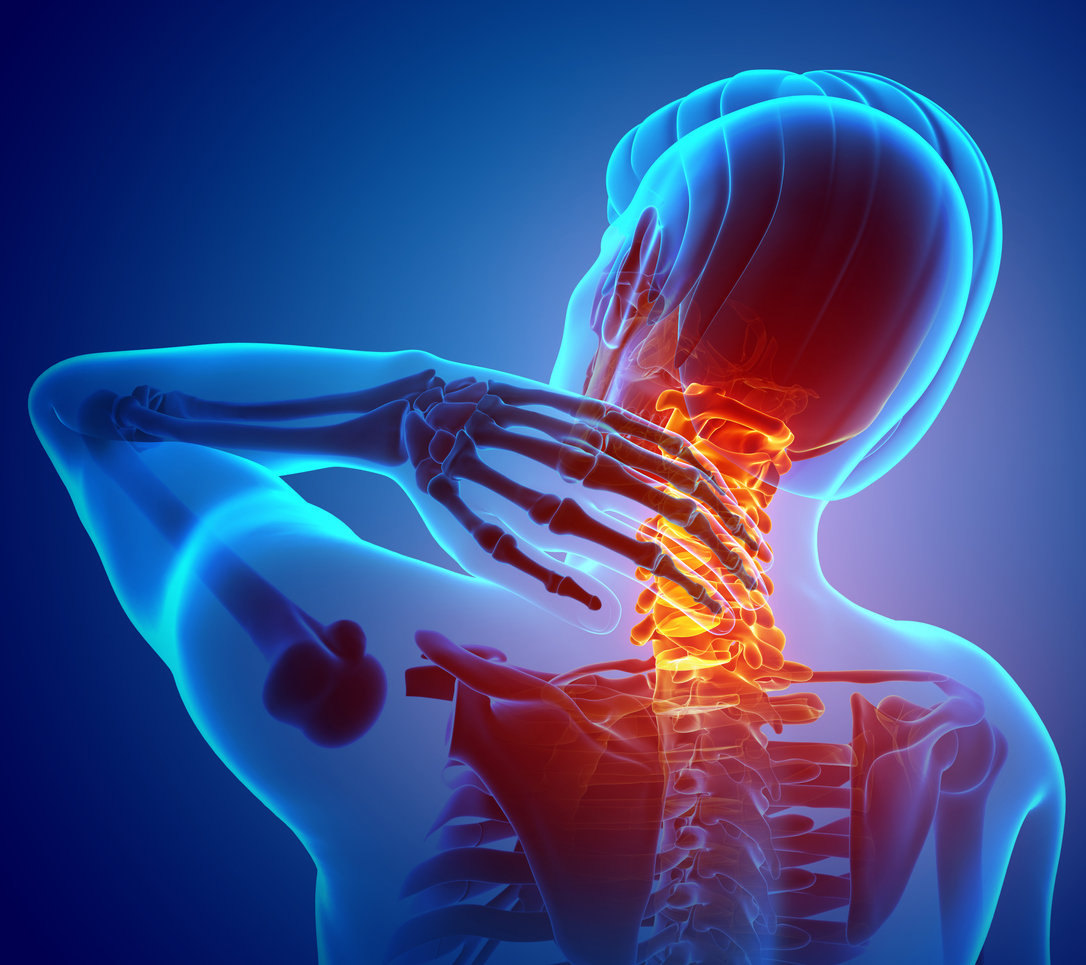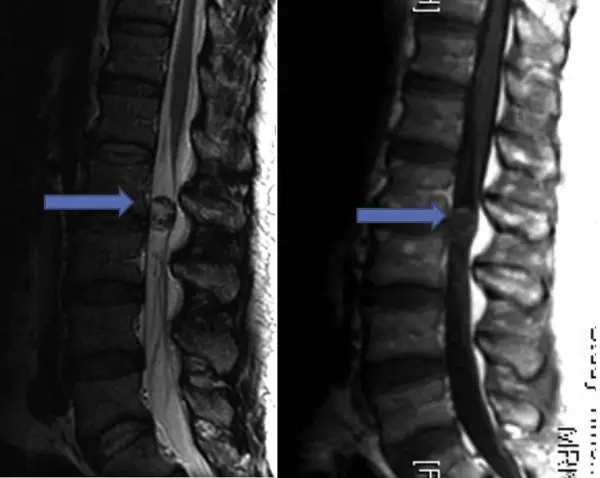Article reviewed and approved by Dr. Ibtissama Boukas, physician specializing in family medicine
Short aspect neck compared to normal, reduced neck mobility, neck pain, sometimes headaches… these are all symptoms that make you think of the Klippel-Feil syndrome. It is a rare and still little known disease. It bears the name of the doctors who carried out the first research on it.
According to statistics, 1 in 42 people suffer from Klippel Feil syndrome. Its diagnosis is made using an X-ray, a scanner and an MRI. Treatment, on the other hand, is based on symptoms. Let’s take stock of this neck pathology.
How to define Klippel Feil syndrome?
La Klippel-Feil disease is a rare bone disease that is present from birth. It results from the absence of segmentation of vertebrae cervical which causes a meltdown. Thus, it can happen that two or even the seven cervical vertebrae of the neck become fused.
According to Andre Feil, a second classification also takes into account the thoracic and also lumbar malformation.
Depending on the number of fused vertebrae and their location, we can distinguish 3 types of fusion in the case of Klippel-Feil syndrome :
- type I fusion: it corresponds to the fusion of several vertebrae;
- type II fusion: it results in the fusion of one or two pairs of vertebrae;
- type III fusion: it involves a vertical fusion with a thoracic and lumbar malformation.
The causes of Klippel Feil syndrome
Klippel Feil syndrome usually occurs between the 3rd and 8th week of pregnancy. It is visible on ultrasound.
Its origin is still poorly known. For some patients, the disease is of genetic origin while for other patients it is an isolated case.
Scientists suggest the hypothesis an incorrect and abnormal division of the tissues of the embryo.
Furthermore, studies have also demonstrated the involvement of certain genes in the development of Klippel Feil syndrome. These include the mutation of the GDF6, GDF3 and MEOX1 genes.
Finally, there are certain diseases that are considered to be factors favoring Klippel Feil syndrome. We can cite :
- fetal alcohol syndrome;
- Goldenhar disease;
- Wildervanck's syndrome;
- hemifacial microsomia.
Symptoms of Klippel Feil Syndrome
The symptoms of Klippel Feil syndrome come in many forms that vary from person to person.
In some cases, these symptoms may seem so minimal that the patient is not even aware of their presence at all. Only a few experts are able to recognize the symptoms of Klippel Feil syndrome.
In other cases, those who suffer from this disease frequently present with difficulty moving the neck. They feel a neck pain and in the back in addition to chronic headaches.
We can also cite some symptoms such as:
- shorter neck;
- a low hairline that comes closer to the back of the head;
- neck stiffness and pain;
- muscle tension in the neck and shoulders;
- of torticollis: contraction of the muscles of the neck which causes the head to tilt to one side;
- fusion of the cervical vertebrae;
- hypermobility of the spaces between the fused segments.
But sometimes there are also other pathologies that manifest with this Klippel Feil syndrome:
- la Scoliosis : deformation of the aspect of the spine causing curvature;
- theosteoarthritis : abnormal wear of the cartilage in the joints;
- The joint pain ;
- The neurological disorders: abnormal skin sensitivity, vision problem, motor disorder, lack of concentration, headaches, etc.;
- a drooping eyelid ;
- a deafness ;
- a breathing difficulty or failure ;
- a chronic fatigue ;
- the missing or fused ribs ;
- underdevelopment of one or both shoulder blades with shoulder weakness: Sprengel's deformity;
- a chronic sinusitis ou chronic nasal congestion ;
- The hypo or hyperthyroidism.
How to make the diagnosis of Klippel Feil syndrome?
First of all, as Klippel Feil syndrome is formed during an early period of pregnancy, it is therefore quite possible to detect it during ultrasound sessions.
However, in order to confirm the diagnosis of Klippel Feil syndrome after birth and to assess the other associated anomalies, additional examinations come into play.
This is primarily an x-ray of the cervical region. It is done in various positions: lateral, in flexion-extension position and along the anteroposterior face.
If in doubt about the development of other pathologies in association with Klippel Feil syndrome, the use of MRI (Magnetic Resonance Imaging) and CT scans is also useful.
What are the treatments for Klippel Feil syndrome?
The treatments for Klippel Feil syndrome are mainly based on the symptoms observed in the patient. They aim to improve the living conditions of the patient. Also, they guide the latter to adopt an adequate lifestyle to live better with the disease.
These treatments vary and are characterized according to the seriousness of the disease and can be undertaken for life.
In the event of complications, a meticulous, consistent and monitored evaluation by different specialists is necessary to improve the results.
There are different therapies available to alleviate Klippel Feil syndrome. We can cite :
- the use of cervical collars,
- braces,
- traction,
- physical therapy (physiotherapy, physiotherapy, osteopathy, etc.)
- nonsteroidal anti-inflammatory drugs (NSAIDs),
- and various painkillers…
Let us take the example of patients who suffer from a neck pain. The latter must benefit from minimal treatments to calm the pain. Thus, they can take an analgesic such as paracetamol or aspirin.
In cases of people who suffer from pain and numbness as a result of pinching orirritation of the nerves in the neck, they can resort to vertebral infiltrations.
If the pain persists or if there is a risk of damage to the spinal cord, surgery may be required.
Vision and deafness problems require consultation with specialists in these fields.
Physiotherapy and kinesitherapy can also be beneficial in case of Klippel Feil syndrome.
Prognosis and life expectancy after Klippel Feil syndrome
The prognosis varies depending on the patient's case. Similarly, the life expectancy of people with Klippel-Feil syndrome depends on the abnormalities affecting the patient.
According to studies, people who suffer from this disease have a life expectancy in line with that of a healthy person, provided that the disease is still at a mild stage. The best medical care and appropriate treatment by a medical specialist can help the patient live a normal life. On the other hand, they should always avoid activities that require intense or repeated use of the neck. These can cause injuries at this level.
In people whose Klippel-Feil syndrome has complications, more vigilance is needed. It is imperative for them to limit daily activities. This avoids a trauma or injury to the cervical vertebrae which are all the more fragile.
Finally, there is the surgery. The doctor prescribes it in cases where there is a high risk of spinal cord injury.
Sources
- https://www.orpha.net/consor/cgi-bin/OC_Exp.php?Expert=2345&lng=FR
- http://xn--anesthsie-et-maladies-rares-goc.com/index.php?action=article&id=Klippel%20-%20feil%20 (syndrome%20de) .html
- https://sante.vip/syndrome-de-klippel-feil-symptomes-causes-diagnostic-et-traitement/
- https://www.tandfonline.com/doi/pdf/10.3109/00016923109133918
- https://www.diseasemaps.org/fr/klippel-feil-syndrome/top-questions/traitements-naturels/



